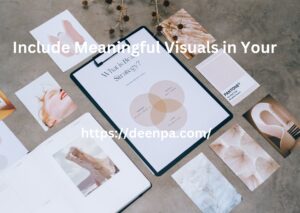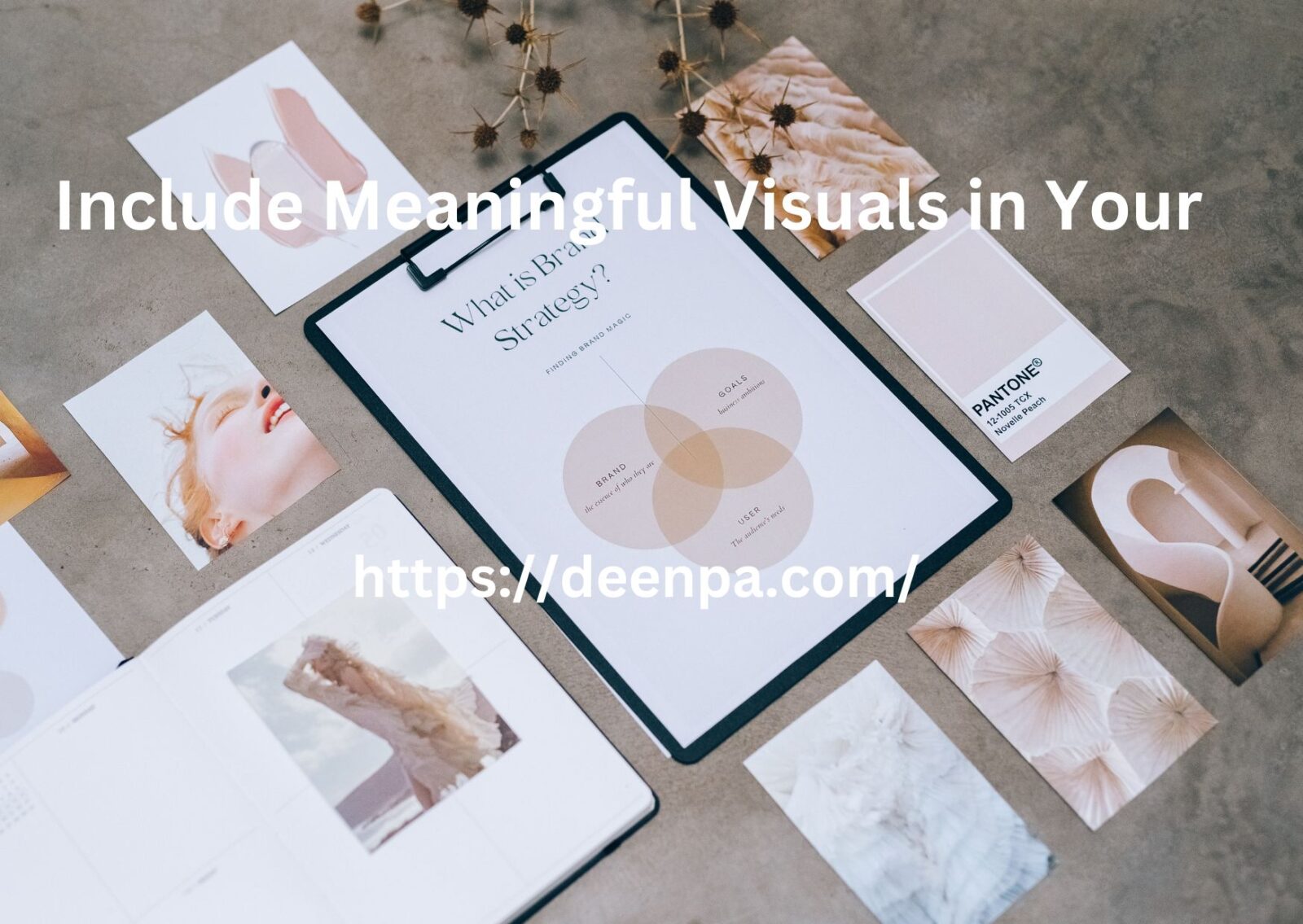Include Meaningful Visuals in Your
Include Meaningful Visuals in Your .Imagine reading a blog post that’s nothing but a wall of text. Not very appealing, right? Now picture a blog post that’s complemented with eye-catching images, informative infographics, and engaging videos. Which one would you prefer? The answer is obvious. Visuals play a crucial role in enhancing the appeal and effectiveness of your blog content. In this article, we’ll explore the importance of including meaningful visuals in your blog and how they can elevate your readers’ experience.
Why Are Visuals Important?
Enhancing Readability
Have you ever clicked away from a text-heavy article because it looked daunting? Visuals break up the content, making it easier to digest. Well-structured images and infographics provide visual breaks that encourage readers to continue scrolling.
Increasing Engagement
The human brain processes visuals faster than text. Visuals evoke emotions and resonate with readers on a deeper level. Including relevant images and videos can keep your audience engaged and interested in your content.
Choosing the Right Visuals
High-Quality Images
When selecting images, opt for high-resolution ones that align with your content. Blurry or pixelated images can negatively impact your readers’ experience.
Informative Infographics
Infographics are perfect for presenting complex data in a visually appealing manner. They condense information and make it easier to understand.
Captivating Videos
Videos are highly engaging and can convey a lot of information in a short span. Whether it’s a tutorial, interview, or storytelling, videos can enrich your blog.
Creating Original Visual Content
Custom Images
Using your own images adds a personal touch to your blog. You don’t need to be a professional photographer – just focus on capturing relevant visuals.
Designing Infographics
Several online tools make creating infographics a breeze. Organize information logically and use colors that match your brand.
Producing Videos
You don’t need a Hollywood budget to create compelling videos. A smartphone and basic editing skills can go a long way.
Optimizing Visuals for SEO
Image Alt Text
Search engines can’t “see” images, but they can read alt text. Use descriptive alt text to make your visuals searchable and improve accessibility.
File Compression
Large image files can slow down your website’s loading speed. Compress your images without sacrificing quality.
Mobile-Friendly Design
Ensure your visuals look great on both desktop and mobile devices. Responsive design is key for a seamless user experience.
Visuals and Branding
Consistent Style
Maintain a consistent visual style throughout your blog. This reinforces your brand identity and makes your content recognizable.
Conveying Your Message
Visuals should align with your message. A cohesive visual narrative enhances your content’s impact.
Placing Visuals Strategically
Breaking Up Text
Long paragraphs can be overwhelming. Place visuals strategically to break up the text and guide readers through your content.
Visual Hierarchy
Use visuals to guide your readers’ attention. Larger visuals or strategically placed images can direct focus.
Avoiding Visual Overload
Balance is Key
While visuals are essential, an overload can be counterproductive. Strike a balance between text and visuals for the best results.
Relevant Visuals
Every visual should serve a purpose. Irrelevant visuals can confuse readers and dilute your message.
Measuring Visual Performance
Analyzing Engagement
Monitor how readers interact with your visuals. This can provide insights into what works and what needs improvement.
Tools for Tracking
Use analytics tools to assess the performance of your visuals. Adjust your approach based on the data you gather.
The Power of Visual Storytelling
Eliciting Emotions
Visuals have the power to evoke emotions, making your content more memorable and impactful.
Crafting Narratives
Tell a story through your visuals. Whether it’s a sequence of images or a video journey, narratives engage readers.
Accessibility and Inclusivity
Alt Text for Screen Readers
Include descriptive alt text for your images, making your content accessible to visually impaired readers.
Color Considerations
Ensure color choices are inclusive and provide sufficient contrast for readability.
Future Trends in Visual Content
Virtual and Augmented Reality
Emerging technologies like VR and AR offer exciting possibilities for immersive visual experiences.
Interactive Visuals
Engage your audience with interactive visuals. These can include polls, quizzes, and 360-degree images.
Conclusion
Incorporating meaningful visuals into your blog content isn’t just an option; it’s a necessity. Visuals enhance readability, boost engagement, and make your content more memorable. Whether you’re using images, infographics, or videos, striking the right balance and aligning visuals with your message are key. Embrace the power of visuals and take your blog to new heights.
FAQs
Q1: Can I use images from the internet for my blog? A: While you can use some images with proper attribution, creating your own visuals adds a unique touch to your content.
Q2: How do visuals impact my website’s SEO? A: Well-optimized visuals, including descriptive alt text and proper file compression, can improve your website’s search engine rankings.
Q3: Are there any tools for creating infographics? A: Yes, tools like Canva, Pikto chart, and Venngage make designing infographics easy even for non-designers.
Q4: What’s the ideal length for videos in a blog post? A: Videos should be concise

